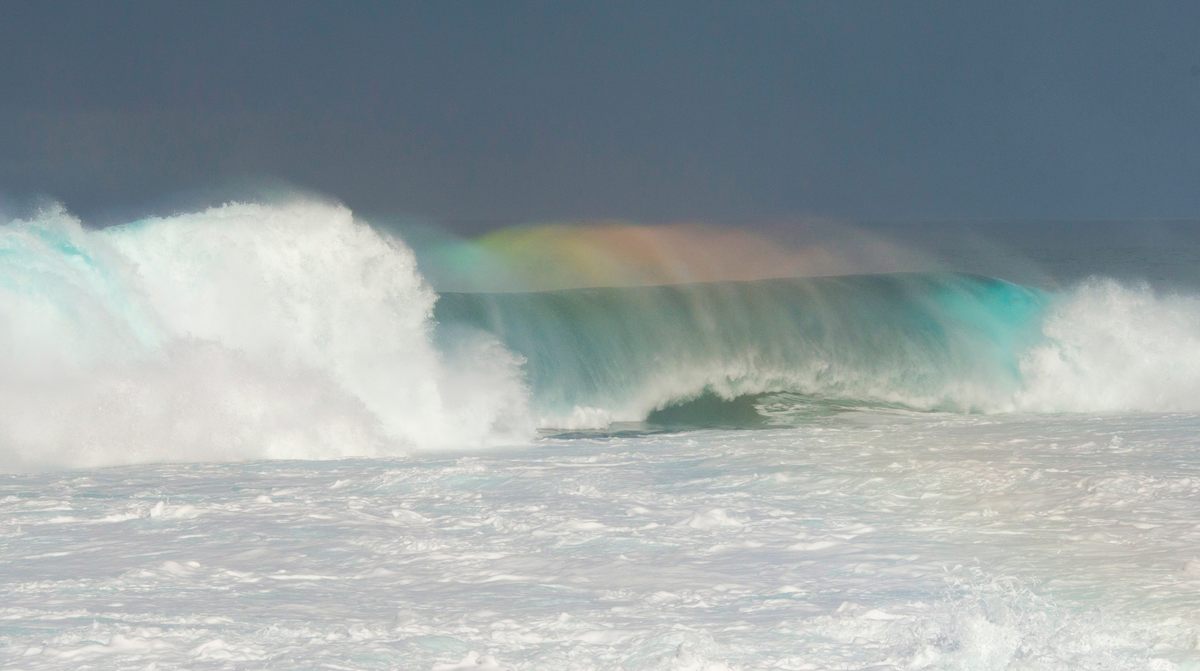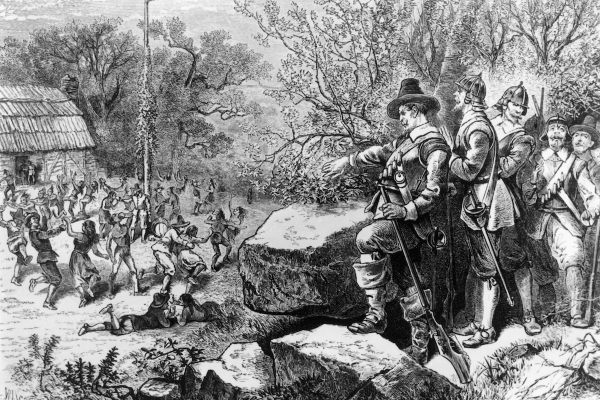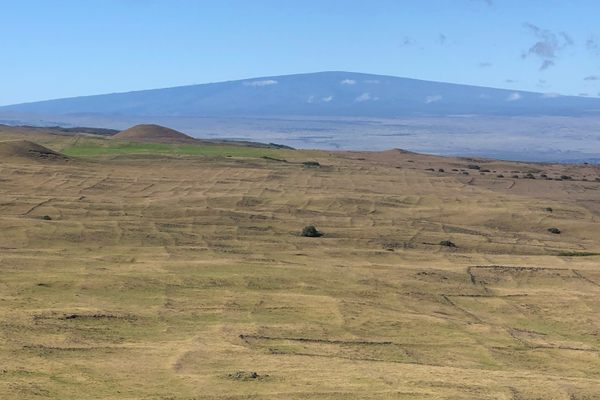Why Hawaiʻi Is Perfect for Rainbows
According to one scientist, geography and weather make it the “Rainbow Capital of the World.”
From his office on the edge of Mānoa Valley in Honolulu, University of Hawaiʻi meteorologist Steven Businger often sees rainbows, some that last all day. According to Hawaiian legend, these heavenly arcs embody the presence of Kahalapuna, the daughter of a chief and chiefess who mourned her death by transforming themselves into their spirit forms, the Mānoa wind and misty rain. When these divine spirits blow through the valley, Kahalapuna appears as a rainbow.
The Hawaiian language has more than 20 words describing this “spectacular phenomenon,” says Businger, including Earth-clinging rainbows (uakoko), standing rainbow shafts (kāhili), and moonbows (ānuenue kau pō). Rainbows are embedded in traditional Hawaiian culture and folklore—something he discovered while penning a paper, recently published in the Bulletin of the American Meteorological Society, exploring why the island chain is geographically perfect for them.

“I’ve lived in Hawai‘i since 1993 and the rainbows here are so numerous and so beautiful that they really inspired me to make the case that Hawai‘i is the Rainbow Capital of the World,” says Businger, an atmospheric scientist whose regular research subjects include severe weather, hurricanes, and ways to improve forecasting. “Also with the pandemic, people are in the doldrums a bit; I thought it would be fun to have a paper about something that’s inspiring.”
Rainbows, of course, occur all over the world, any place where there’s sun and rain or mist that hangs in the air. But Hawai‘i has particularly ideal ingredients for them: trade winds that create intermittent showers with clear skies in between, allowing the sun to shine on raindrops; sea breezes that enhance the formation of rain over mountain crests; and exceptionally clean air that contributes to vivid colors. There are even moonbows—night rainbows illuminated by a bright moon.

What Businger finds particularly enchanting is that no two people see the same rainbow. “Even if you’re standing next to each other, the rainbows you see are composed of light coming from a different set of droplets,” he says. “So it’s a slightly different rainbow.”
A basic way to understand rainbows is to think of sunlight being scattered by drops of water that bend (or refract) and reflect the rays. Under the right conditions, including light at one’s back and the right viewing angle, a rainbow appears.
Early philosophers, including Aristotle, recognized that rainbows appear when sunlight shines on droplets in the air, but it wasn’t until 1637 that René Descartes offered a “satisfactory” explanation of what was happening, Businger’s paper notes. Building on the work of Theodoric of Freiberg, who in 1304 showed that light passing through glass globes filled with water results in rainbow effects, Descartes figured out the correct refractive index that enabled him to scientifically trace the path of light rays through a rain droplet.

The colors, however, were left unexplained. Isaac Newton resolved the mystery several decades later through experiments with prisms. Different colors bend at different angles, so a prism or water droplet splits white light or sunlight into a continuous spectrum of colors. “Newton chose to divide the visible spectrum into seven colors,” Businger writes, “informed by the beliefs of the ancient Greek sophists, who thought there was a connection between the colors, musical notes, known objects in the solar system, and the days of the week.”
That division into seven colors—red, orange, yellow, green, blue, indigo, and violet—is arbitrary, the paper notes, as many more colors can be perceived by human eyes, and rainbows contain them all. (In a double rainbow, the order of the colors is reversed in the secondary rainbow, with red on the inside and violet on the outside.)

Many cultures have interpreted and adopted the atmospheric phenomenon in various ways. The Bible describes it as a sign of God’s promise to never again unleash an Earth-destroying flood. In Norse mythology, a rainbow bridge called the Bifrost connects the home of the gods with the realm of humans. Hawaiian mythology also regards the rainbow as a celestial path between divine and earthly realms, as well as a symbol of transformation. More recently, the LGBTQ community has made it a symbol of pride.
Perhaps it’s the surprise of seeing a rainbow, its captivating colors, or the enormity of the arc that make the experience so magical. And while rainbows aren’t illusions, they also aren’t tangible—and there’s no way to reach the end of one. As a North Carolina woman attested to local media last summer after following the curve of one to an interstate highway: “It just kind of disappears as you drive through it.”










Follow us on Twitter to get the latest on the world's hidden wonders.
Like us on Facebook to get the latest on the world's hidden wonders.
Follow us on Twitter Like us on Facebook